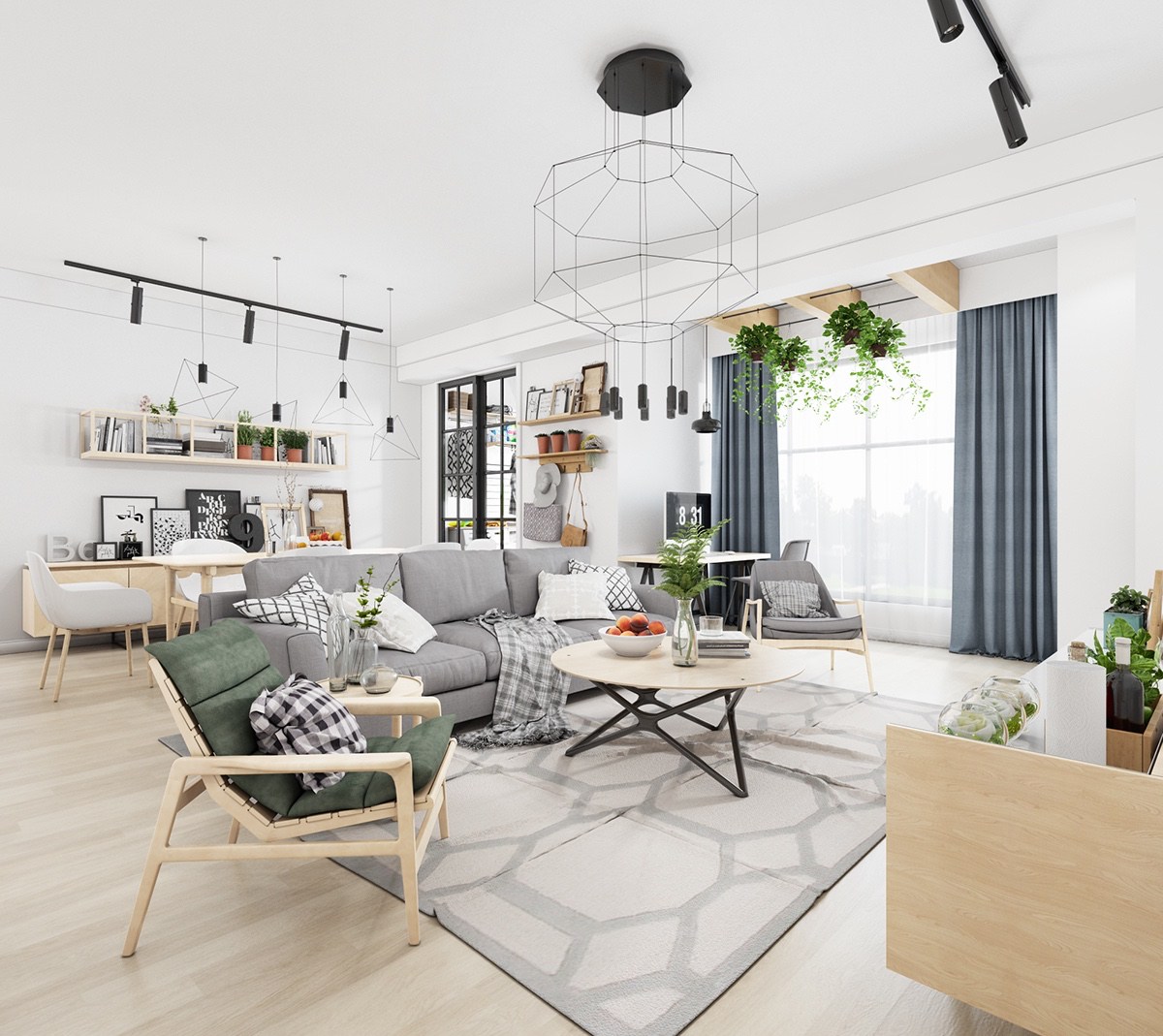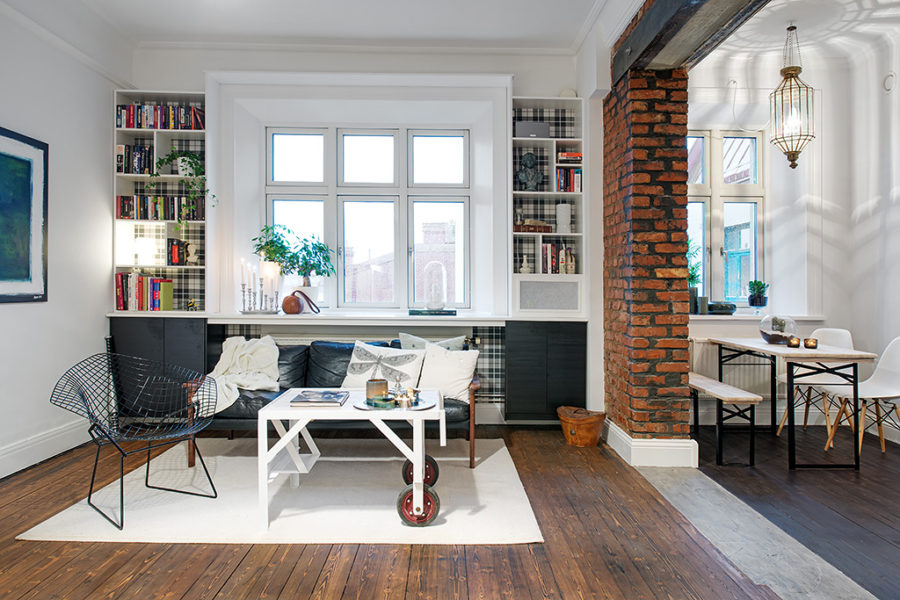Scandinavian design has been a beloved interior design style for decades, thanks to its emphasis on simplicity, functionality, and a deep connection to nature. Originating from the Nordic countries—Denmark, Norway, Sweden, and Finland—this design philosophy blends minimalism with coziness, creating spaces that are both aesthetically pleasing and comfortable to live in. In recent years, Scandinavian design has become a global trend, appealing to those who seek tranquility, warmth, and beauty in their living spaces.
In this article, we will explore the key principles of Scandinavian design, recent trends, and practical tips on how to incorporate this timeless style into your own home. Whether you’re decorating a small apartment or a large family home, this guide will help you achieve the perfect balance of functionality and beauty.
Table of Contents
ToggleWhat is Scandinavian Design?
At its core, Scandinavian design is rooted in the idea of creating a harmonious, clutter-free living environment that focuses on functionality without sacrificing aesthetics. It developed in the 1950s and is heavily influenced by the Nordic region’s cold, long winters, where interiors were designed to be light, warm, and inviting.
Key Elements of Scandinavian Design
- Minimalism with Warmth: Scandinavian interiors are known for their minimalism, but unlike other minimalist styles, they are also warm and welcoming. Instead of stark, sterile spaces, Scandinavian design incorporates soft textiles, natural materials, and cozy touches to create a comfortable environment.
- Neutral Color Palette: The color schemes in Scandinavian design are dominated by whites, grays, and muted earth tones. These colors reflect the natural light, making spaces feel brighter, especially in regions where daylight is scarce during winter.
- Natural Materials: Wood is a key component in Scandinavian design—from furniture to flooring. The use of natural, untreated wood, often in light tones like birch or pine, brings warmth and texture to the space. Other materials such as wool, leather, and linen are also popular.
- Clean Lines and Functional Furniture: Furniture in Scandinavian design is both functional and visually appealing. Pieces are often simple, with clean lines and a focus on utility. Multi-functional furniture, such as storage benches or modular sofas, is commonly used to maximize space.
- Hygge and Comfort: A central concept in Scandinavian design is “hygge,” a Danish term that roughly translates to “coziness.” It emphasizes the creation of a comforting, inviting atmosphere through the use of soft lighting, warm textiles like woolen blankets, and candles.
Recent Trends in Scandinavian Design for 2024

While the core principles of Scandinavian design remain constant, recent years have seen new trends emerge within this popular style. As we move into 2024, here are some of the latest developments in Scandinavian design that you should consider:
1. Sustainability and Eco-Friendly Choices
Sustainability is becoming an increasingly important element in Scandinavian design. Homeowners are choosing furniture made from sustainable materials and opting for eco-friendly, ethically produced items. This trend aligns perfectly with the Nordic tradition of appreciating and protecting nature.
Example:
A dining table made from recycled wood or furniture brands that prioritize sustainable practices are becoming common in Scandinavian interiors. Using organic, non-toxic paints for walls and natural fibers like wool and cotton for upholstery are other eco-conscious choices.
2. Dark Accents
While Scandinavian design is typically associated with light, neutral colors, 2024 is seeing an introduction of darker accents. These darker hues, such as deep blues, charcoal, and forest greens, are being used in moderation to add depth and contrast to rooms without overwhelming the space.
Example:
In a living room with white walls and light wooden furniture, adding a dark blue armchair or a charcoal gray rug can create a focal point while maintaining the minimalist aesthetic of Scandinavian design.
3. Wabi-Sabi Influence
The Japanese concept of wabi-sabi—finding beauty in imperfection—has started to influence Scandinavian design. This trend encourages the use of handmade, imperfect, and natural materials that celebrate uniqueness and authenticity. This adds a layer of warmth and individuality to the traditionally sleek, minimalist Scandinavian interiors.
Example:
Incorporating a handmade ceramic vase with irregular shapes or using a rough-hewn wooden coffee table can bring a touch of wabi-sabi to a Scandinavian living space.
4. More Textures, Less Pattern
While Scandinavian interiors have always embraced texture, there’s been a noticeable move away from patterns in recent years. In 2024, expect to see even more focus on varying textures to add visual interest and depth without the need for busy patterns or prints.
Example:
A bedroom might feature a combination of a chunky knitted throw, a woolen rug, and linen curtains, all in neutral colors, to create a soothing and tactile environment without the use of bold patterns.
5. Layered Lighting
Lighting is a crucial element in Scandinavian design, especially during the dark winter months. The latest trend is to layer different types of lighting—ambient, task, and accent lights—to create a cozy, well-lit space. Soft, warm lighting helps to enhance the hygge atmosphere that is central to this design style.
Example:
A typical Scandinavian living room might feature a floor lamp for reading, a pendant light for general illumination, and several candles or string lights to create a cozy, inviting mood in the evening.
Benefits of Scandinavian Design
There are many reasons why Scandinavian design has become so popular worldwide. Its focus on simplicity, functionality, and comfort makes it an ideal choice for a wide range of living environments. Here are some key benefits of embracing Scandinavian design in your home:
1. Creates a Calming Environment
The minimalist approach and use of neutral colors in Scandinavian design help to create a peaceful, uncluttered environment. This style is perfect for those who seek a calm, relaxing home where they can unwind after a busy day.
2. Maximizes Natural Light
One of the core principles of Scandinavian design is making the most of natural light. With large windows, white walls, and light-colored furniture, Scandinavian interiors are designed to feel bright and airy, even in the darkest months of the year.
3. Functional and Stylish Furniture
In Scandinavian design, furniture is not just about looks—it must also serve a practical purpose. This focus on functionality ensures that every piece in the home is useful, making Scandinavian interiors perfect for small spaces where efficient use of space is essential.
4. Warm and Inviting Atmosphere
Despite its minimalist roots, Scandinavian design is anything but cold or sterile. The use of natural materials, cozy textiles, and warm lighting helps to create an inviting, comfortable atmosphere that encourages relaxation and togetherness.
How to Achieve the Scandinavian Design Look
If you’re inspired by the beauty and simplicity of Scandinavian design, here are some practical tips on how to incorporate this style into your home:
1. Choose a Light, Neutral Color Palette
Start by painting your walls in light, neutral colors such as white, light gray, or beige. These shades will reflect natural light and make your space feel larger and brighter. Avoid bold, flashy colors, as they can disrupt the calm, serene feeling that Scandinavian design is known for.
2. Opt for Functional, Minimalist Furniture
Look for furniture that is both simple and functional. Avoid overly ornate pieces and instead opt for clean lines and natural materials. Wooden furniture with a light, natural finish is ideal for achieving the Scandinavian design look. Multi-functional furniture, like storage benches or extendable dining tables, can help maximize space without sacrificing style.
3. Incorporate Natural Materials
Add warmth to your home by incorporating natural materials like wood, wool, and leather. A wooden dining table, a woolen throw, and a leather armchair can all contribute to the cozy, welcoming feel of Scandinavian design.
4. Focus on Cozy Textiles
To embrace the hygge concept, layer your space with cozy textiles such as soft blankets, woolen rugs, and linen cushions. These elements add warmth and texture, making your home feel inviting and comfortable.
5. Use Soft, Layered Lighting
Lighting is key in Scandinavian design, so focus on creating a warm, well-lit environment. Layer different types of lighting, such as floor lamps, table lamps, and candles, to create a cozy atmosphere. Opt for soft, warm lightbulbs to avoid harsh, bright lighting.
Final Thoughts
Scandinavian design offers a timeless, functional, and beautiful approach to interior design. Its emphasis on minimalism, natural materials, and a cozy atmosphere makes it ideal for creating spaces that are both practical and inviting. Whether you’re looking to completely redesign your home or simply update a few elements, the principles of Scandinavian design can help you create a serene, stylish, and functional living space.
In 2024, trends such as eco-friendly materials, darker accents, and a focus on textures are bringing new life to the traditional Scandinavian design aesthetic. By embracing these trends, you can create a home that is not only beautiful but also in tune with nature and your personal well-being.




